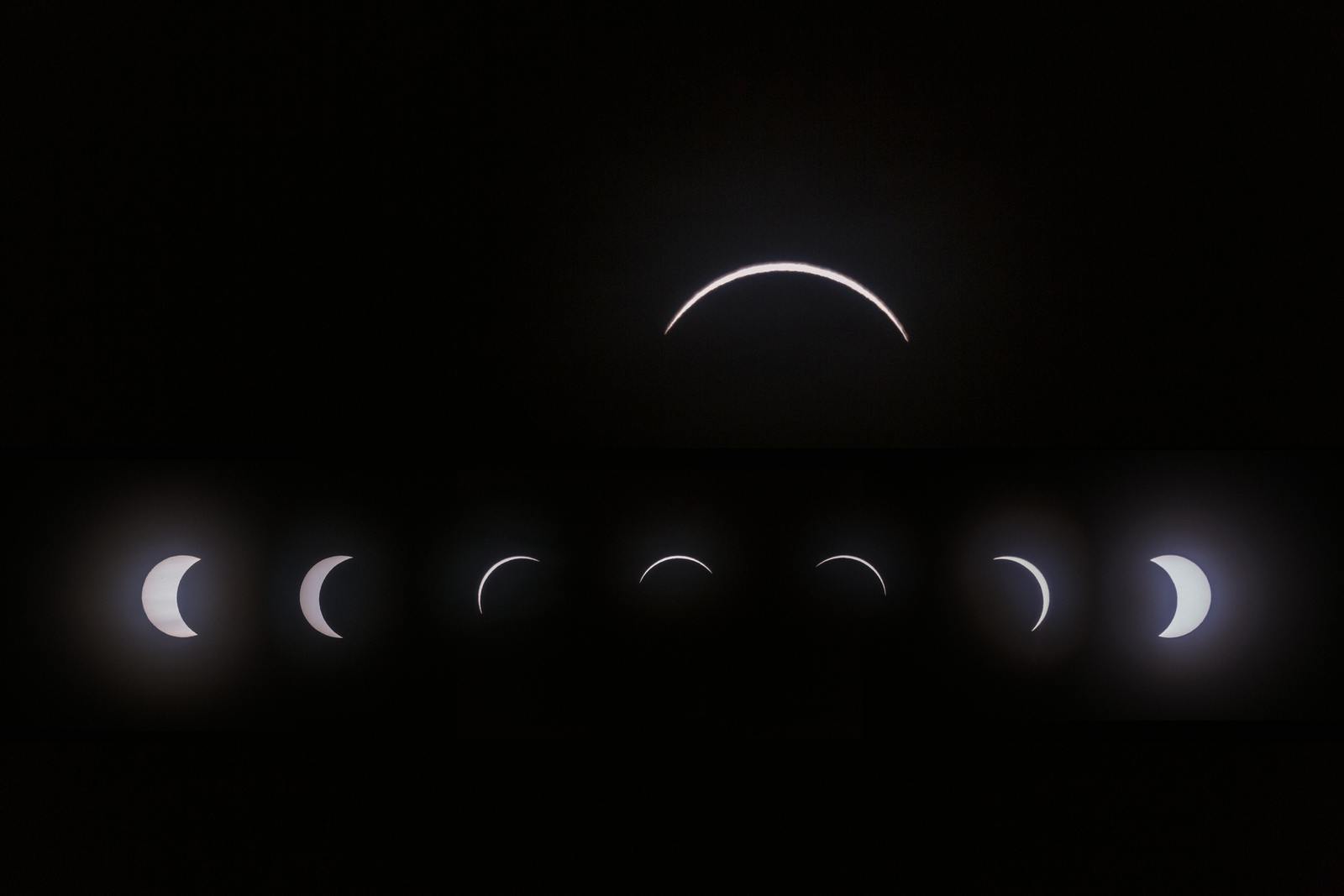
Tips for Solar Eclipse Photography
The mesmerising sight of a solar eclipse is a once-in-a-lifetime experience for many. When the moon moves between the Earth and the sun, it creates a spectacle of light and shadow that’s impossible to forget. But capturing that moment on camera can be challenging, especially for those new to eclipse photography. Whether you’re an experienced photographer or a curious traveller hoping to take some beautiful shots during the solar eclipse, the following tips will help you capture stunning images.
As Iceland prepares for the upcoming total solar eclipse on August 12, 2026, this guide will provide essential photography tips for tourists planning their trip to Iceland. We’ll cover everything from camera settings to must-have gear. And while you’re in Reykjavik for the eclipse, don’t forget to check out Perlan, an iconic landmark with an observation deck offering one of the best views of the eclipse.
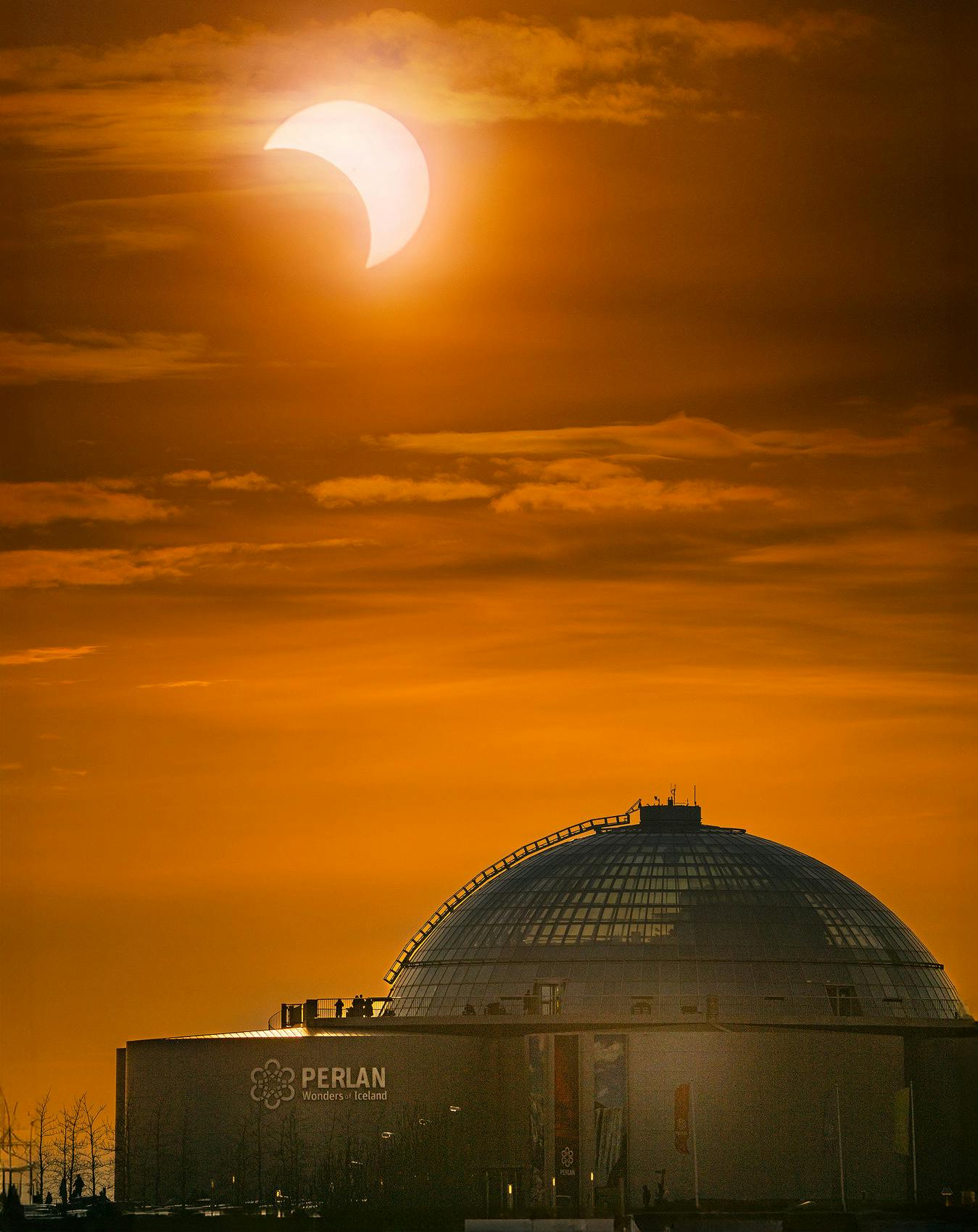
Essential Gear for Solar Eclipse Photography
Before diving into camera settings and techniques, let’s look at the essential gear you’ll need to capture the solar eclipse safely and effectively.
Solar Filters
A solar filter is one of the most critical pieces of equipment for solar eclipse photography. Without a solar filter, the sun’s rays can damage both your camera’s sensor and, more importantly, your eyes. Make sure you get a certified solar filter for your camera lens. This filter will block harmful UV and infrared rays, allowing you to photograph the sun safely.
Tripod
A sturdy tripod is essential for eclipse photography. Since you’ll be using longer exposure times and potentially zooming in on the sun, having a stable platform for your camera will prevent blurry images caused by camera shake.
Telephoto Lens
A telephoto lens, ideally between 400mm and 800mm, will allow you to capture close-up details of the eclipse. You can use a smaller lens with lower magnification if you don’t have a long lens. The telephoto lens will give you those dramatic, zoomed-in shots of the sun’s corona during totality.
Remote Shutter Release
A remote shutter release allows you to trigger the camera without touching it, reducing the chance of a camera shake. You can also use the camera’s timer function as an alternative.
Backup Batteries and Memory Cards
Eclipse photography requires a lot of shots and extended setup times, so ensure you have extra batteries and memory cards on hand. This will prevent any last-minute disruptions as you capture those unforgettable moments.
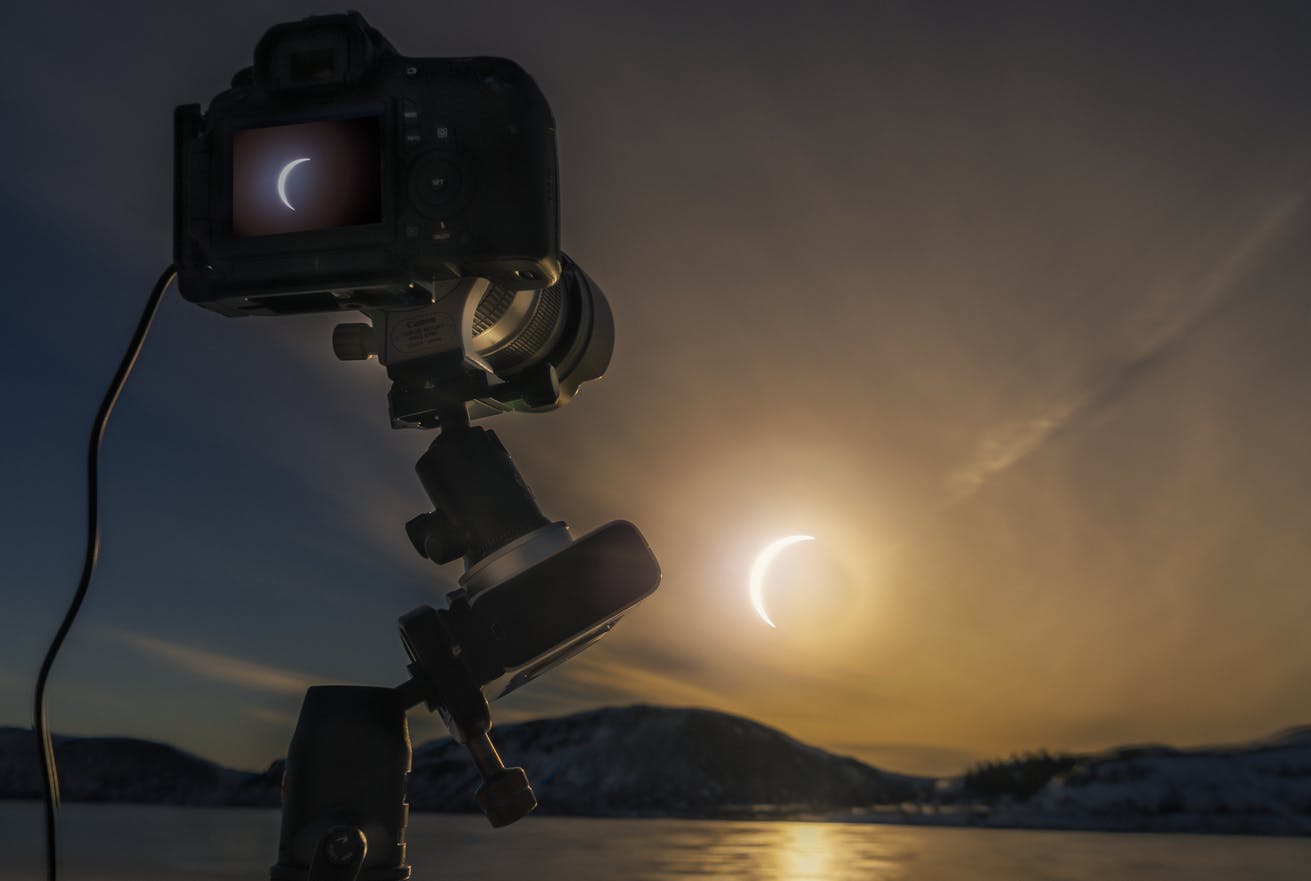
Camera Settings for Solar Eclipse Photography
Adjusting your camera settings is key to achieving the best results when photographing a solar eclipse. Here are some general guidelines:
ISO
Keep the ISO setting as low as possible, ideally around 100 or 200. A low ISO minimises image noise, ensuring your photos are crisp and clear. You won’t need a high ISO setting since you’ll work with plenty of natural light.
Aperture (f-stop)
For a solar eclipse, an aperture of f/8 to f/16 is recommended. This range provides good depth of field and sharpness, allowing you to capture the details of the sun’s surface and the corona during totality.
Shutter Speed
The shutter speed you use will vary depending on which phase of the eclipse you’re capturing. Before totality, when the sun is still bright, use a fast shutter speed (around 1/1000 to 1/4000 seconds) to avoid overexposure. During totality, when the sky darkens, you can use a slower shutter speed (around 1/125 to 1/4 seconds) to capture the sun’s corona.
White Balance
Set your camera’s white balance to daylight or auto. This will give you a neutral colour profile that can be easily adjusted later in post-processing.
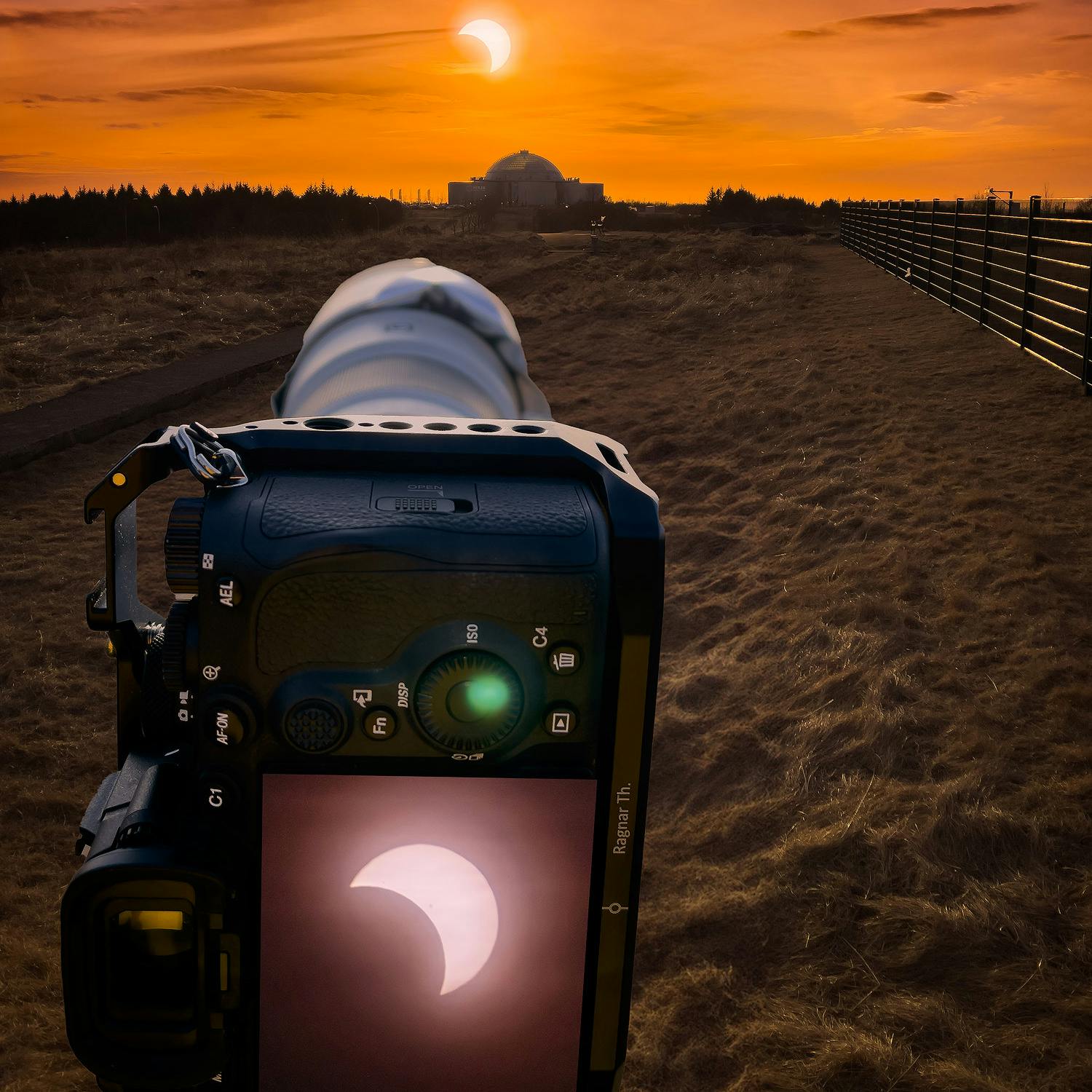
Step-by-Step Guide to Taking Solar Eclipse Photos
Now that you have the right gear and settings, here’s a step-by-step guide to capturing stunning solar eclipse photos.
Step 1: Set Up Your Gear
Find a safe, stable location for your tripod, preferably with a clear view of the sky. Perlan’s observation deck in Reykjavik is an excellent choice for its panoramic views of the city and surrounding landscapes.
Step 2: Attach Your Solar Filter
Make sure your solar filter is securely attached to your camera lens. This is crucial for protecting your eyes and your camera’s sensor when photographing the sun.
Step 3: Focus on the sun
Use manual focus to ensure your camera is correctly focused on the sun. Autofocus may struggle in these conditions, so zoom in on the sun and manually adjust the focus until it appears sharp on your camera’s screen.
Step 4: Adjust Camera Settings
Use the recommended settings (ISO 100-200, f/8-f/16, shutter speed 1/1000 to 1/4000 seconds) to begin photographing the partial phases of the eclipse. Adjust your shutter speed as the light changes throughout the different stages of the eclipse.
Step 5: Capture Totality
When totality occurs (the brief period when the moon completely covers the sun), you can remove the solar filter from your lens. During totality, the light dims, and you can slow down your shutter speed to capture the faint corona surrounding the moon. This is the most dramatic moment of the eclipse, so make sure to take multiple shots with different exposure times.
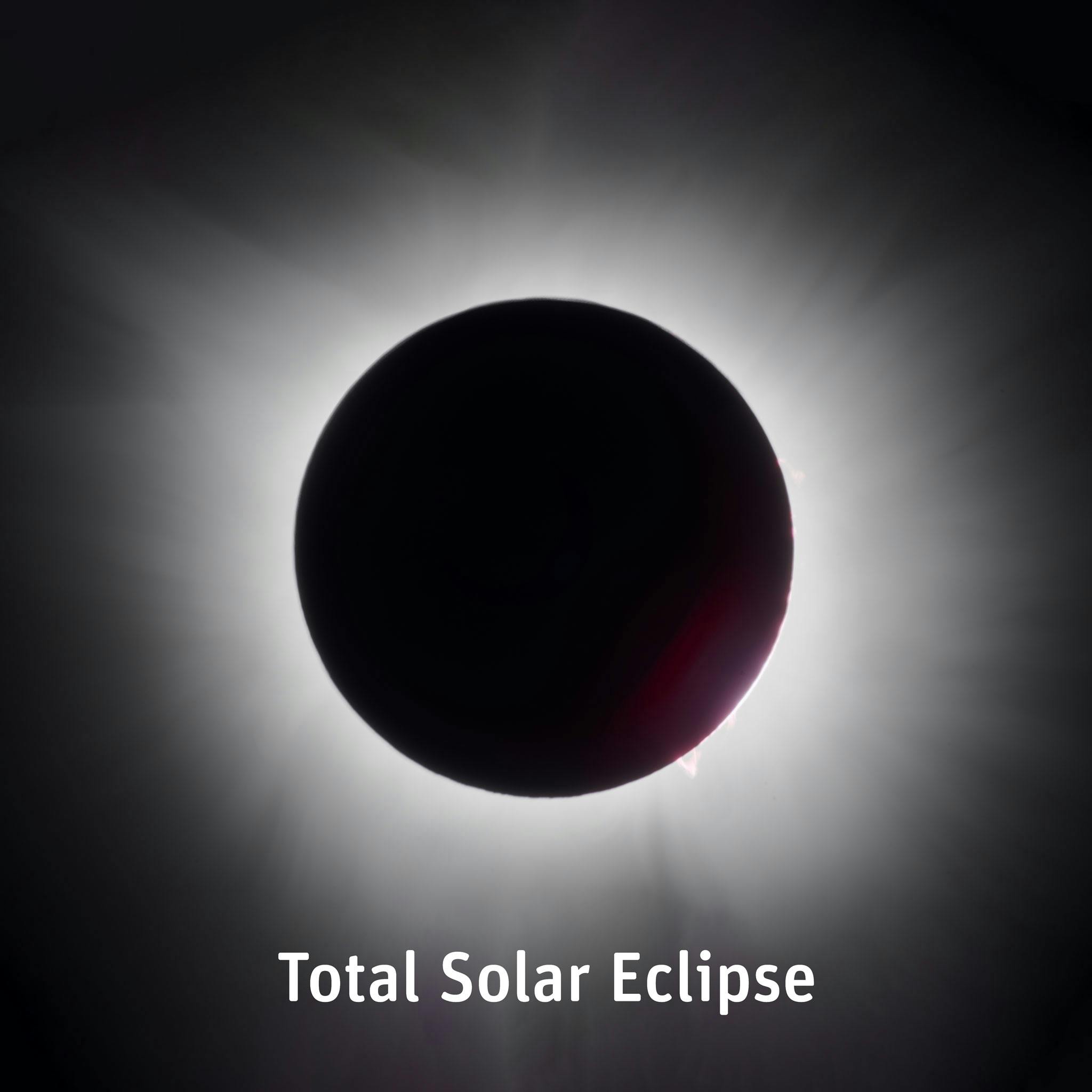
Step 6: Post-Processing
After the eclipse, use photo-editing software like Adobe Lightroom to adjust your images’ exposure, contrast, and sharpness. Fine-tuning your shots in post-processing can bring out the details in the corona and make your photos truly stunning.
Capturing the solar eclipse in Iceland is a dream opportunity for both professional and amateur photographers. Following these tips and using the correct gear can capture stunning images of this extraordinary event. And while you’re preparing to witness the eclipse, be sure to visit Perlan in Reykjavik for one of the best vantage points and a deeper understanding of Iceland’s natural wonders.

FAQs
What settings should I use for solar eclipse photography?
Use a low ISO (100-200), an aperture between f/8 and f/16, and a fast shutter speed for the partial phases. During totality, slow down your shutter speed to capture the corona.
Can you take a picture of a solar eclipse with your phone?
A solar filter and a tripod are recommended for stability when using your phone for photographs. Specialised apps can help optimise your shots.
What filter is best for solar eclipse photography?
A certified solar filter is essential for safely photographing the eclipse and protecting your camera’s sensor.
What is the best focal length for solar eclipse photography?
The best focal length for solar eclipse photography typically ranges between 400mm and 800mm. A longer focal length, like 500mm to 800mm, will give you a close-up of the sun, while a shorter one, around 300mm to 400mm, captures more of the surrounding sky and eclipse setting.
Popular tours
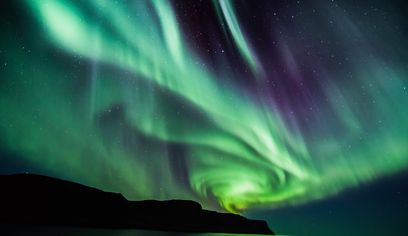
The #1 Northern Lights Tour in Iceland | FREE photos, Homemade Hot Chocolate & cinnamon buns

Reykjavík Northern Lights Cruise

Aurora Basecamp Night pass

Reykjavík Whales & Northern Lights

Northern Lights Tour from Reykjavik, With Photographs, Local Pastrys and Hot Chocolate

DT 310 Private Superjeep Northern Lights

NORTHERN LIGHTS AND STARGAZING (Guided in 10 languages)

GOLDEN CIRCLE AND NORTHERN LIGHTS (Guided in 10 languages)

Aurora Viking - The Private Tour - Northern Lights Tour

Northern Lights w/Aurora Viking - free pro photos - Free Retry – minibus
